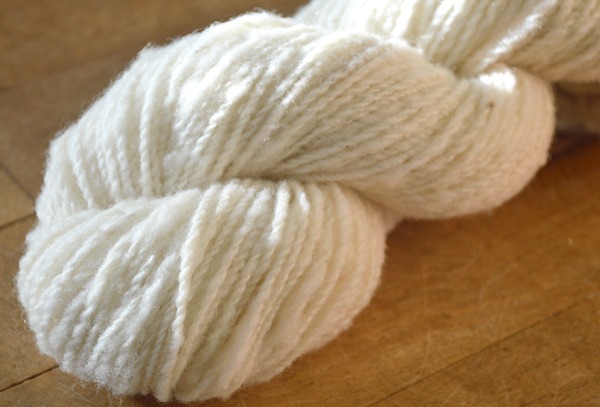
I also had decided that I wanted to spin for and knit the Ghosthunter’s Cloche, with some moorit Shetland fibre I had picked up earlier in the year. That was… not entirely successful. And not for any fault of the pattern (in fact, I’m going to re-knit it in a commercial yarn), entirely through my own fault.
The problem was, the Shetland I have is roving, but I spun it short forward anyway. I’ve done this before, and it’s not necessarily a bad thing, but it most definitely was for this fibre. The resulting yarn, which was nice enough to look at, was so insanely dense and uneven, it was actually uncomfortable to work with.

I did knit a gauge swatch before starting, but when your gauge is all over the place, what’s the use? Needless to say the hat doesn’t fit, much to my chagrin because it’s a super awesome pattern. All may not be lost – I’m going to try felting it in the wash to get it down to size.
But that whole experience really got me thinking about my spinning.
I’m very comfortable with short forward draw, and I’m okay with short backward, but when it comes to things like spinning from the fold or long backward, I’m the proverbial babe. This is compounded by the fact that I like spinning worsted and really love worsted yarns, but as I so painfully learned in December, that’s not always appropriate.
So the past few weeks, I’ve been digging through my stash – I have a selection of rovings I got from Custom Woolen Mills in Carstairs last year that I’ve been woefully neglecting, and I decided finally to learn long draw.
Like most handspinners I fear the dreaded “wasting of the fibre”. I know whatever new technique I’m learning will not produce the awesomest of yarn, so I just avoid it. So here’s me, with literally pounds of fibre all prepped and ready to go, but languishing unused.
Well screw that, I say. It’s not all necessarily about the finished yarn, it’s about learning something new, and you’re never going to be great at something you’re just learning for the first time. But practice it enough and you will be great.
So, I pulled out my Ile de France roving and got to work.
My first skein was bumpy. And had underspun bits. And overspun bits. I felt like I was a first time spinner all over again. But, I also learned that long backward is fast. Really fast. That is something I definitely like.

I decided that that first skein was going to be all about learning the new movement – not worrying so much about consistency. I use my left hand to pull the yarn forward in short forward, so learning to pull back with my right was the complete opposite, and my muscle memory fought me pretty hard for that first bobbin.
With the initial jump, I feel a lot more confident though, and quickly decided to move on to a spinning project. I’m being a lot more purposeful with my movements, and a lot more careful about keeping it even. I’m pulling out more slubs, and when a section comes through that doesn’t match, I’m fixing it. The skeins will still be uneven, but I’m hoping not quite as much.
I’m on my final bobbin now, and after plying I’ve decided to finish by thwacking and fulling slightly – the thought process being any under spun bits will hopefully gain some needed strength.
So far I feel pretty good about the whole process, and I’ve gotten enough confidence in it to starting thinking of uses for my other rovings that have been sitting untouched. The last of the moorit Shetland will be next, and I’ll spin pretty much the same weight as the Ile de France. Who knows, maybe a hap is in my future with my first woollen spun yarns?